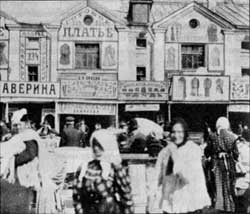
. . . this pattern helps to complete the MAGIC OF THE CITY (10) and PROMENADE (31). And, each time a shopping street gets built, it will also help to generate the WEB OF SHOPPING (19).

Shopping centers depend on access: they need locations near major traffic arteries. However, the shoppers themselves don't benefit from traffic: they need quiet, comfort, and convenience, and access from the pedestrian paths in the surrounding area.
Therefore:
Encourage local shopping centers to grow in the form of short pedestrian streets, at right angles to major roads and opening off these roads with parking behind the shops, so that the cars can pull directly off the road, and yet not harm the shopping street.
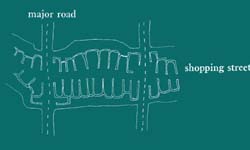

This simple and obvious conflict has almost never been effectively resolved. On the one hand, we have shopping strips. Here the shops are arranged along the major traffic arteries. This is convenient for cars, but it is not convenient for pedestrians. A strip does not 4ave the characteristics which pedestrian areas need.
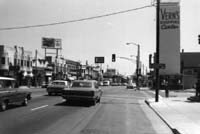
Shopping strip f or cars.
On the other hand, we have those "pre-automobile" shopping streets in the center of old towns. Here the pedestrians' needs are taken into account, at least partially. But, as the town spreads out and the streets become congested, they are inconvenient to reach; and again the cars dominate the narrow streets.
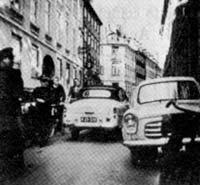
Old shopping street - inconvenient f or cars and people.
The modern solution is the shopping center. They are usually located along, or near to, major traffic arteries, so they are convenient for cars; and they often have pedestrian precincts in them so that, in theory at least, they are comfortable and convenient for pedestrians. But they are usually isolated, in the middle of a vast parking lot, and thereby disconnected from the pedestrian fabric of the surrounding areas. In short, you cannot walk to them.
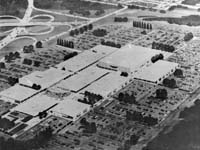
New shopping center - only f or cars.
To be convenient for traffic, and convenient for people walking, and connected to the fabric of the surrounding town, the shops must be arranged along a street, itself pedestrian, but opening off a major traffie artery, perhaps two, with parking behind, or underneath, to keep the cars from isolating the shops from surrounding areas.
We observed this pattern growing spontaneously in certain neighborhoods of Lima, Peru: a wide road is set down for automobile traffic, and the shops begin to form themselves, in pedestrian streets that are perpendicular off-shoots off this road.
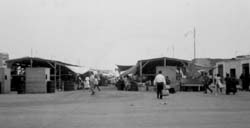

Shopping streets growing spontaneously in Lima, Peru.
This pattern is also the form of the famous Stroget in Copenhagen. The Stroget is the central shopping spine for the city; it is extremely long - almost a mile - and is entirely pedestrian, only cut periodically by roads which run at right angles to it.

Treat the physical character of the street like any other PEDESTRIAN STREET (1OO) on the NETWORK OF PATHS AND CARS (52), at right angles to major PARALLEL. ROADS (23); have as many shops as small as possible - INDIVIDUALLY OWNED SHOPS (87); where the shopping street crosses the road, make the crossing wide, giving priority to the pedestrians ROAD CROSSTNG (54); parking can easily be provided by a single row of parking spaces in an alley lying behind the shops all along the backs of the shops, off the alley, with the parking spaces walled, and perhaps even given canvas roofs, so that they don't destroy the area - SHIELDED PARKING (97), CANVAS ROOFS (244). Make sure that every shopping street includes a MARKET OF MANY SHOPS (46), and some HOUSING IN BETWEEN (48 ) . . . .